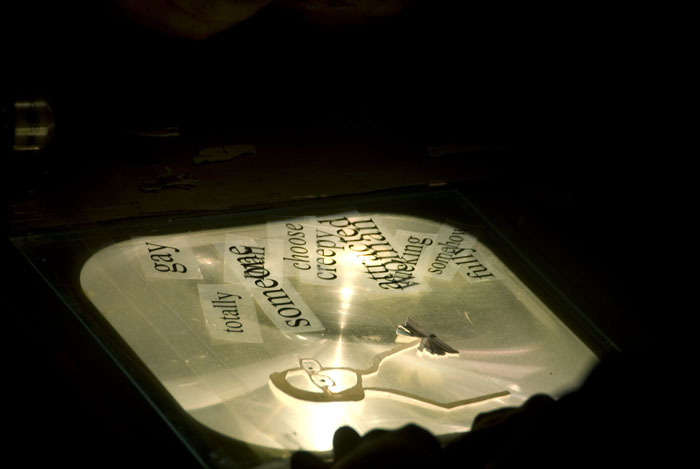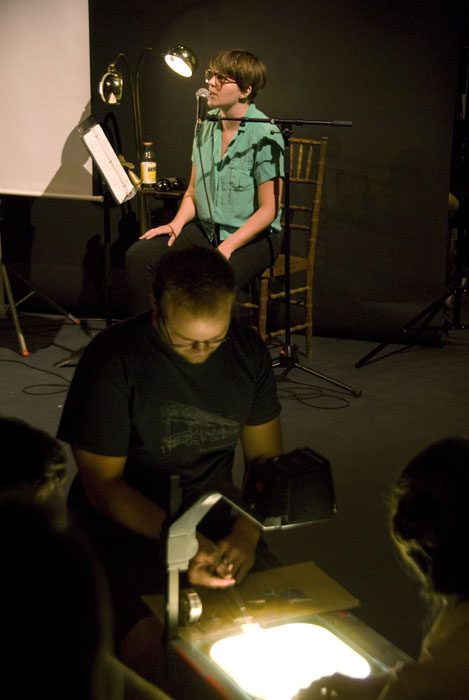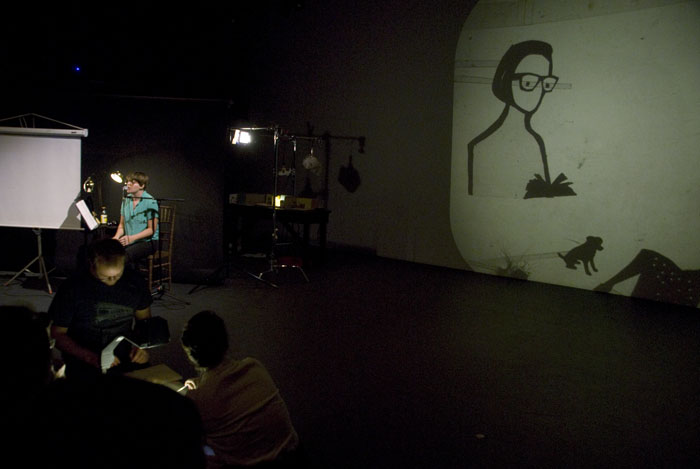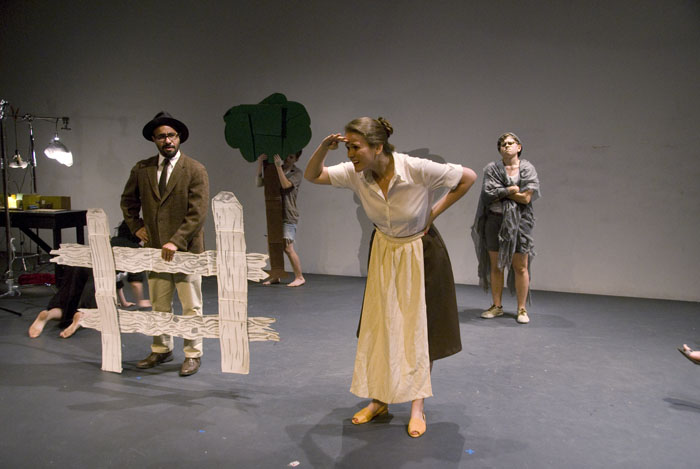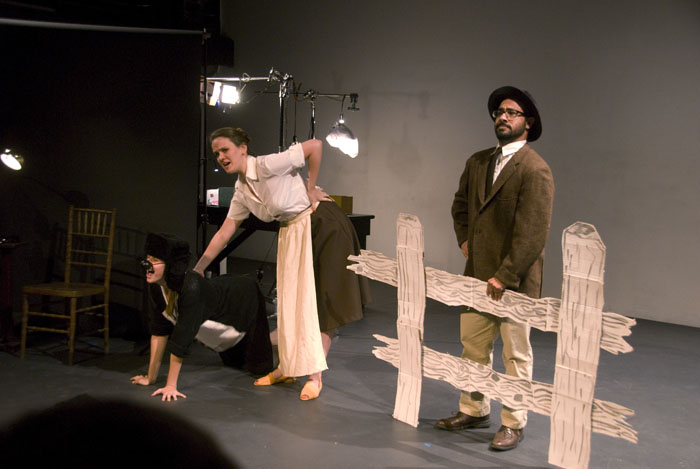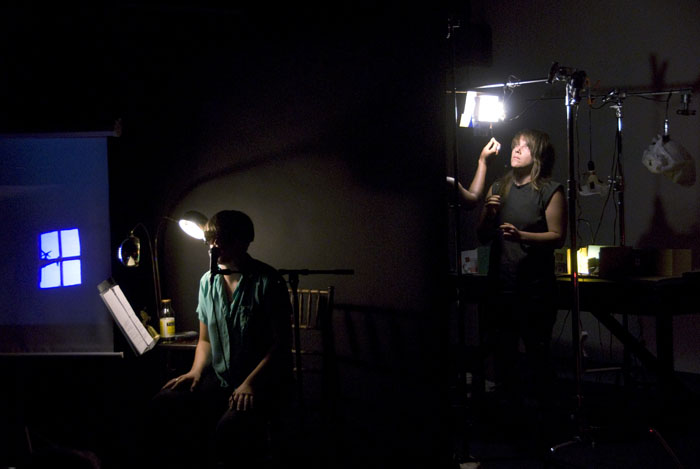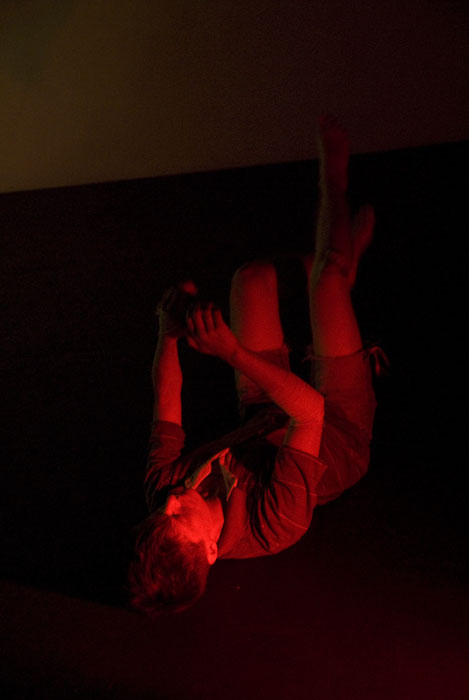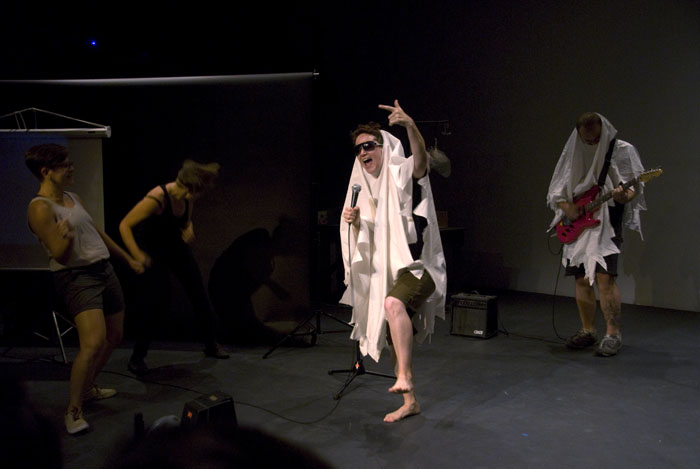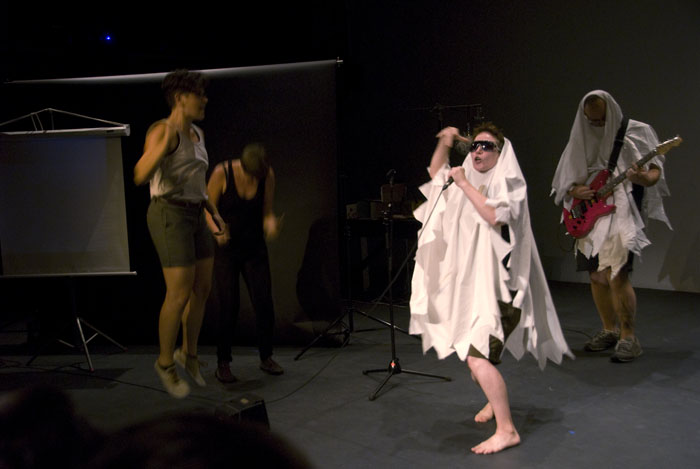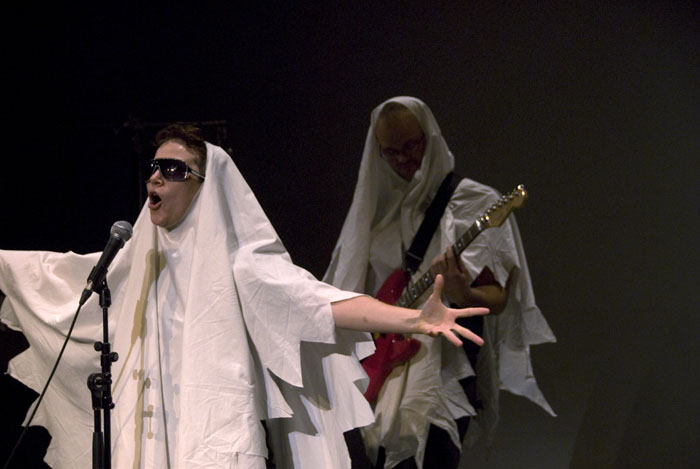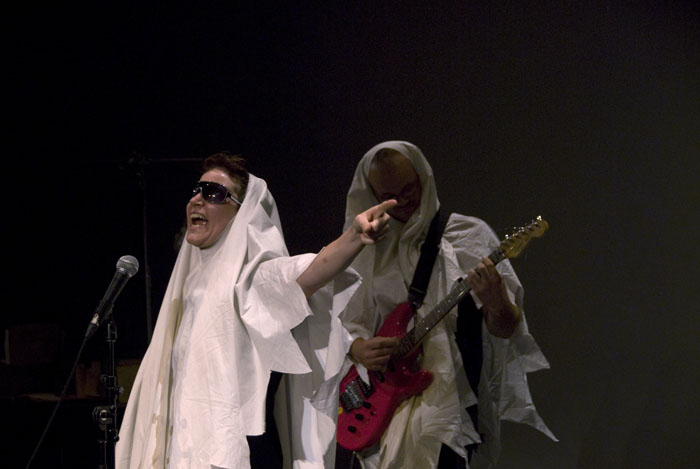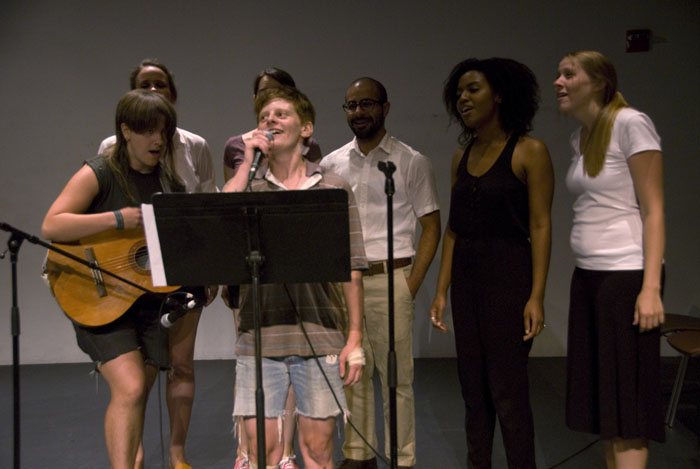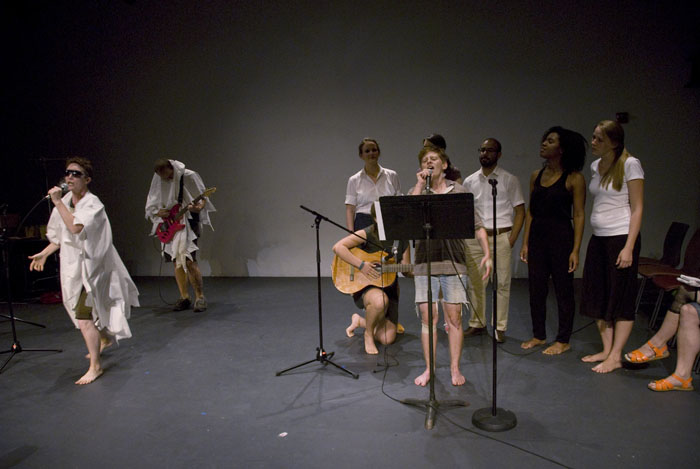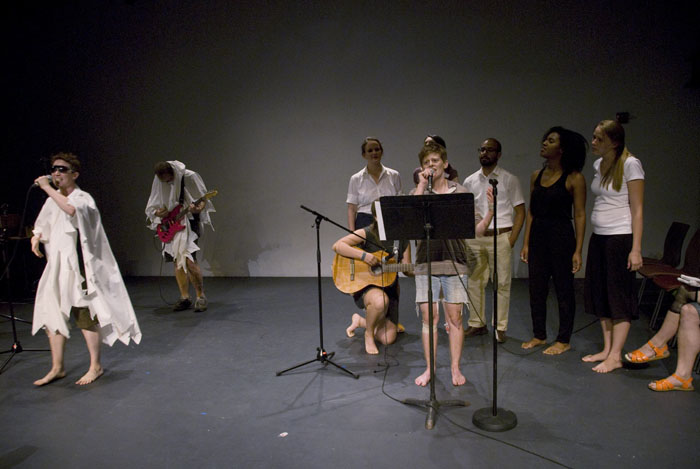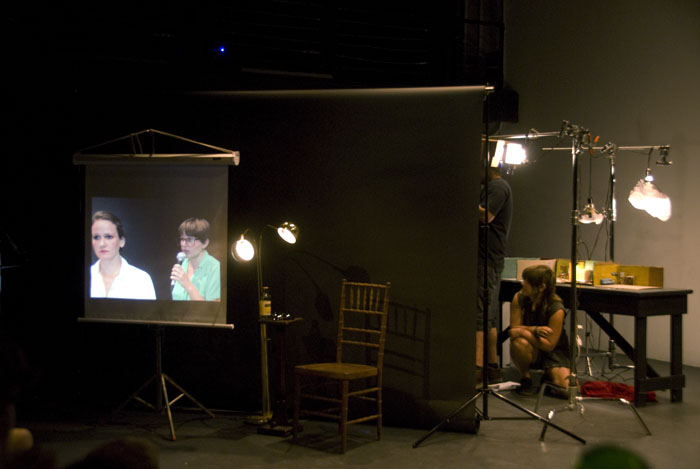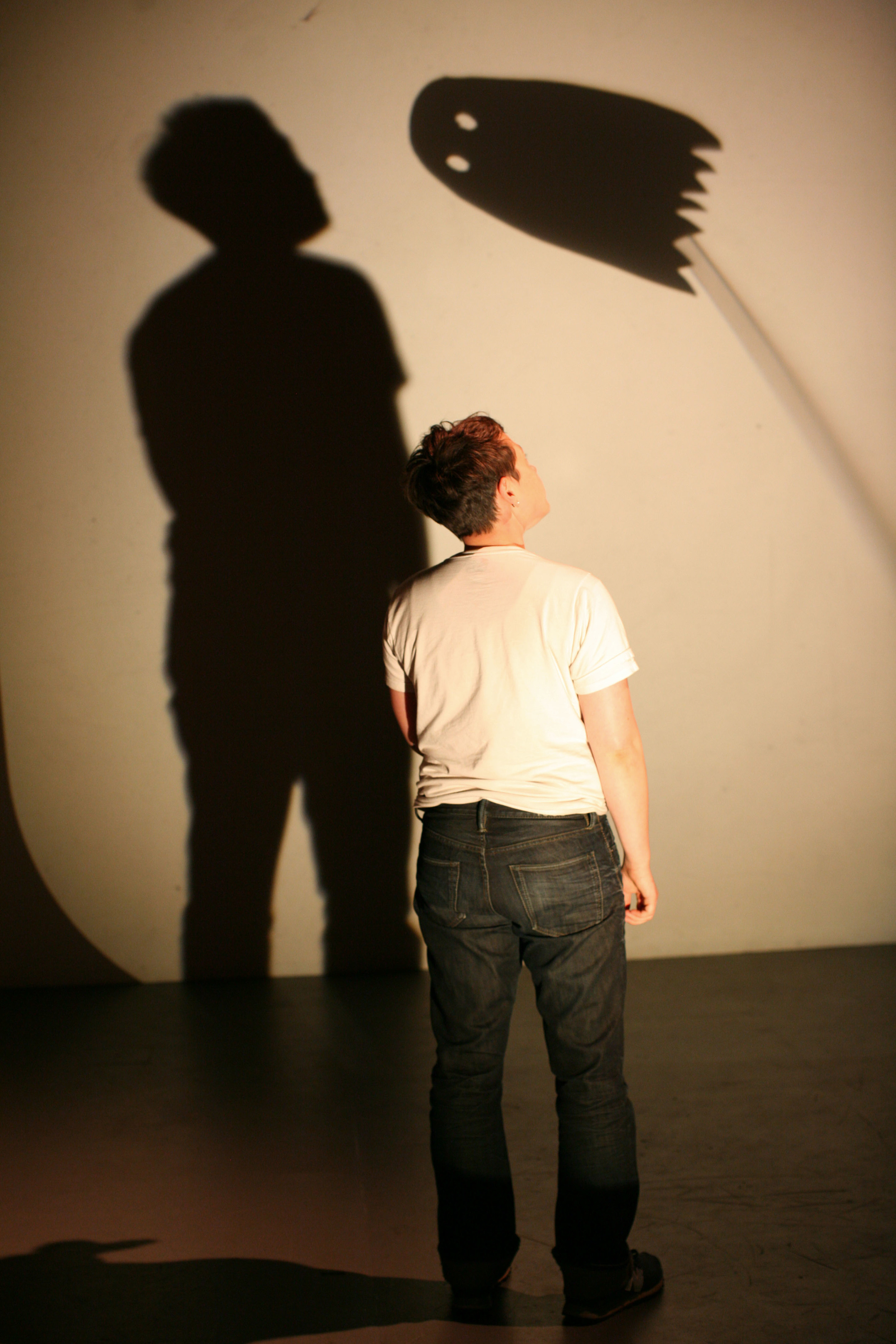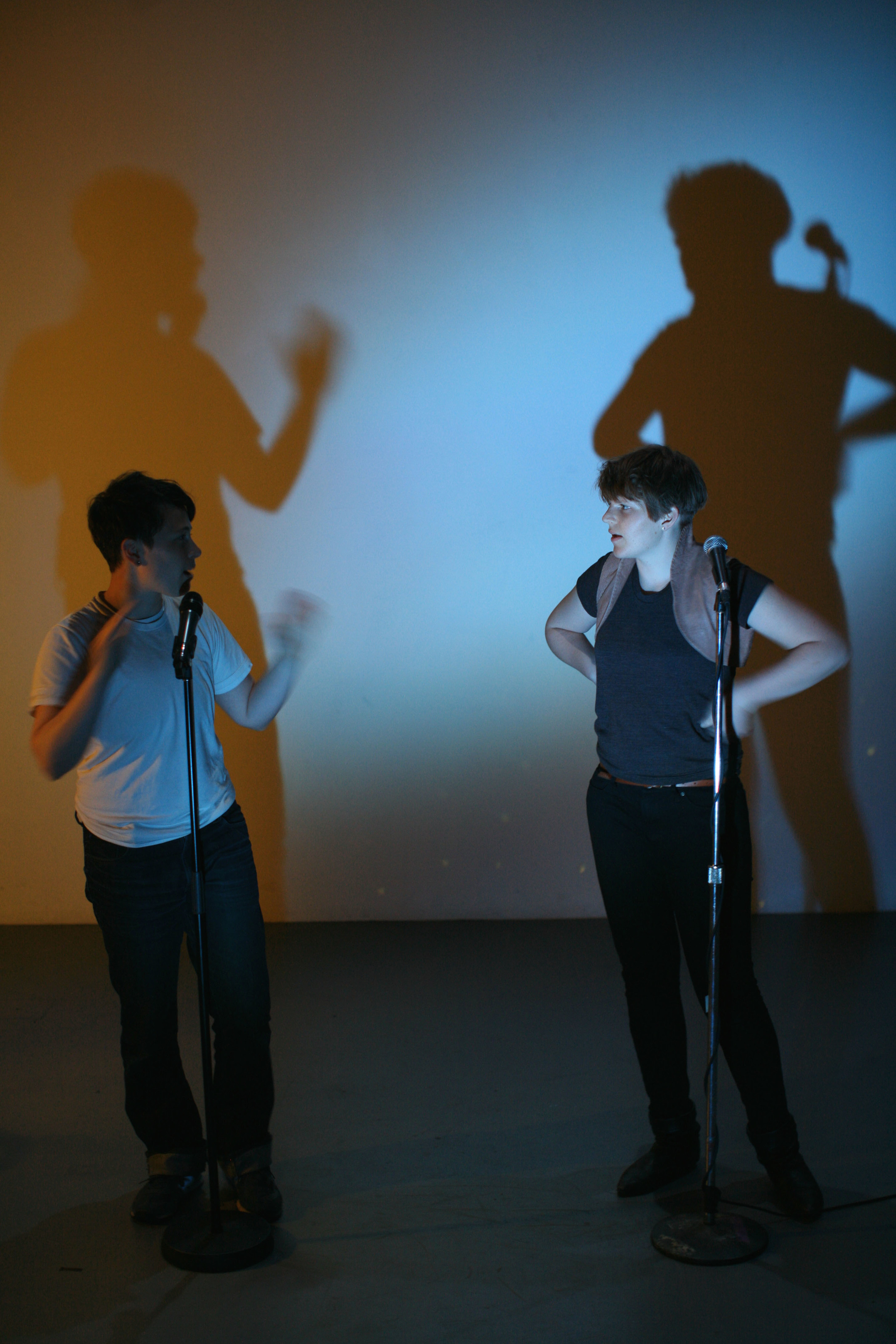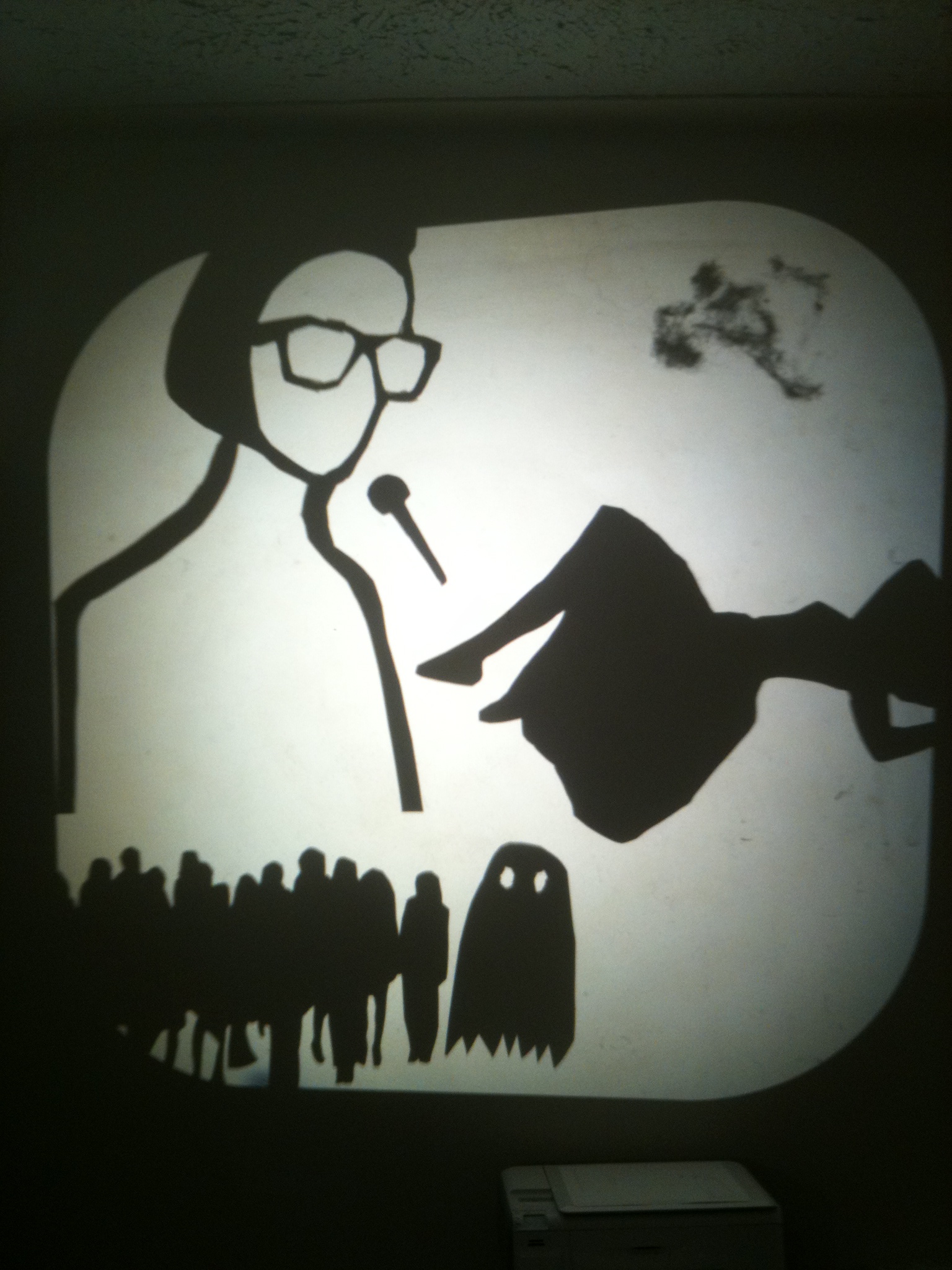The Quiet Way
THE QUIET WAY
Written and directed by Casey Llewellyn
HOT! Festival at Dixon Place, August 2011
Puppetry by Matthew Woellert, Jill Usdan and Francis Rabkin
Choreography by Katy Pyle
Video Design by Molly Allis
Videography by Justin Nunnink
Music by Molly Allis and Matthew Woellert
Costumes by Ramsey Scott
Stage management by Liz Nielsen
Produced by Bennett Elliott and Robert Kolodny
with
Casey Llewellyn as The Girl who Reads
Jess Barbagallo as Robert Llewellyn who is a Girl (by others’ designation)
Jill Usdan as Nora
Aden Hakimi as Old French-Canadian Man w/ Plastic Hips
Lydia Blaisdell as Lapdog
Francis Rabkin as Dust
K. Avvirin Gray, Liz Ainslie, and Amanda Davidson as some of The Chorus of the Young who is Next
and
Drae Campbell as The Ghost
The Quiet Way is a landscape to be entered. The piece unfolds in a constant present, as figures such as Girl who Reads, Robert Llewellyn who is a Girl (by others’ designation), Lapdog and Dust endeavor to find freedom within the confines of language. The play uses Eileen Myles’ words, “I just knew in a quiet way I was ruined if I agreed to be female,” as a jumping off point for the interrogation of gender, sexuality, transformation and the scraping ofthe self against the outside. The piece draws on a wide breadth of performance language—including puppetry, dance, poetry and live music—to call attention to the moment of speaking and the problem of self-expression. The Quiet Way asks, what do you agree to? Where do you want to go?
I love dick
Directed and Adapted by Casey Llewellyn from the book by Chris Kraus
Barnard College, May 2009
Slide and Costume by Design Elizabeth Richardson
Lighting Design by Kati Fitzgerald
Stage Managed by Rachel Karp
Asst. Stage Managed by Lizzy Poleski
with
Meghan Coppoletti as Chris
Nahuel Telleria as Sylvere
and
Ashley Butler, Maya De La Rosa Cohen, Maggie Embick and Jennifer Stepanyk as Chorus
In the book that Kraus refers to as "setting out to solve the problem of heterosexuality," I Love Dick, Chris Kraus falls in love with her husband’s acquaintance, Dick, and the two begin to write love letters to him together. The letters span the breadth from their hilarious whiney feelings and boring records of their daily activities to fiery and articulate political analysis and art criticism. In the piece, Chris' journey is put in the context of a chorus of young women who each interpret it differently and involve themselves in the performance of it in their own ways. The piece explores the relationship between love and performance, gender and authority, art and lived experience. In creating the piece, the performers and creative team each put forth their individual takes on Kraus' inspiring and unique text.

